| Admissions | Accreditation | A to Z Degree Fields | Booksellers | Catalog | Colleges | Contact Us | Continents/States/Districts | Contracts | Distance Education | Emergency | Emergency Medicine | Examinations | Forms | Grants | Hostels | Honorary Doctorate degree | Human Services | Internet | Investment | Instructors | Internship | Login | Lecture | Librarians | Membership | Observers | Professional Examinations | Programs | Progress Report | Recommendations | Research Grants | Researchers | Students login | School | Search | Seminar | Study Center/Centre | Sponsorship | Tutoring | Thesis | Universities | Work counseling |
| Products | |
| Bullet-proof glass |
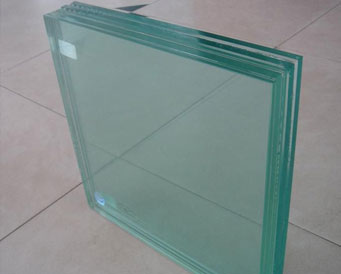 Standard size: 26mm : 10mm+0.76pvb+10mm+0.76pvb+5mm Detailed specification: F79B (total thickness:26mm) it can successfully endure the shooting at 15 metres of 79-type submachine gun,7.62mm steel core ammunition. The bullet is melted in the surface of glass and no splash spattered on the back after shooting, so it protect the safety of the glass-housed crowds. |
| Tempered glass |
 Tempered glass ? Production process: Tempered glass is produced by heating glass to a high temperature and then quenched. This changes its molecular structure where compressive stress is formed on glass surface and tensile stress is formed at the core. The mechanical strength is increased by several times. ? Application glass door, curtain wall, windows, interior partition, furniture,glass , greenhouse, partition and decoration ? Specification ? Glass thickness: 3mm-19mm ? Minimum size: 40mm?40mm ? Maximum size: 9000mm?2440mm ? Color: Clear ,Ultra Clear,Bronze,Grey,Blue,Green ? edge: straight polished edge, polished C-edge, beveled edge, rough edge ? edge corner: edge corner: natural corner,grind corner,round corner ? holes:Drill work is at your option. |
| Aluminum mirror |
| Bulletproof glass |
| Float glass |
| Hollow glass |
| Laminated glass |
| Reflective glass |
| Sheet glass |
| Slivered mirror |
| Tempered glass |
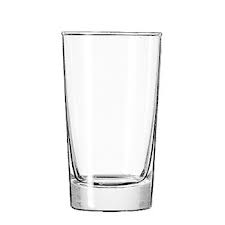


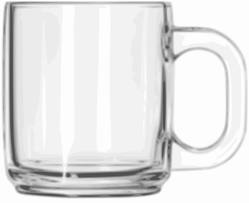
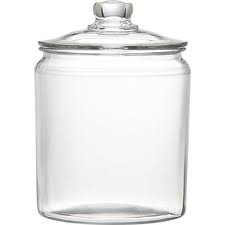





|
| Bottles |
| Beaker |
| Chalice, goblet |
| Coffee cup |
| Cup |
| Flat glass |
| Glass jars |
| Glass windshields(Motor vehicles) |
| Glass mirrors |
| Glass mirror - automotive |
| Glass Windows |
| Glass test tubes |
| Glass optical fibers |
| Glass containers |
|
Glass lenses(
Eyeglasses) Plastic lenses(polycarbonate) |
| Mug |
| Microscopes with glass lenses. |
| Optical glass fiber for data and non-data transmissionSimilar |
| Pressed or blown glass products |
| Pythagorean cup |
| Quaich |
| Sake cup (ochoko) |
| Stemware |
| Tankard |
| Teacup |
| Tumblers |
| Telescopes with glass lenses. |
|
History of glass Glass ingredients Contemporary glass production Architecture Glassmaking in the laboratory Other glasses Network glasses Amorphous metals Electrolytes Aqueous solutions Molecular liquids Polymers Colloidal glasses Glass-ceramics Structure Glass versus supercooled liquid Behavior of antique glass Physical properties Optical properties Color |
|
Q. What is Glass? Q. How is glass produced? Q. What is safety glazing? Q. What is security glazing? Q. What are the most common types of glass? Q. Why glass is transparent? Q. Is glass liquid or solid? Q. Why Glass is so Fragile? Q. Is there any method available to make a non-breakable glass? Q. Why is window glass transparent? Q. How are glass bottles and jars made? Q. How does recycling fit into the glass manufacturing process? Q. Why are more recycled glass bottles and jars needed? Q. What types of glass can be recycled? Q. What is the best way to recycle glass? Q. Do glass bottles have to be separated by color when recycling? Q. Do glass bottles have to be washed before recycling? Q. Are glass bottles included in state beverage deposit programs? Q. Can broken glass bottles be recycled? What is Glass? Glass is a rigid material formed by heating a mixture of dry materials to a viscous state, then cooling the ingredients fast enough to prevent a regular crystalline structure. As the glass cools, the atoms become locked in a disordered state like a liquid before they can form into the perfect crystal arrangement of a solid. Being neither a liquid nor a solid, but sharing the qualities of both, glass is its own state of matter. Most glass you encounter is silicate glass, which consists mainly of silica or silicon dioxide, SiO2. This is the type of glass you find in windows and drinking glasses. The crystalline form of this mineral is quartz. When the solid material is non-crystalline, it is a glass. You can make glass by melting silica-based sand. Natural forms of silicate glass also exist. Impurities or additional elements and compounds added to the silicate change the color and other properties of the glass. Sometimes the term glass is restricted to inorganic compounds, but more often now a glass may be an organic polymer or plastic or even an aqueous solution. Glass Examples Several types of glass occur in nature: obsidian (volcanic silicate glass) fulgurites (sand that has been vitrified by a lightning strike) moldavite - green natural glass likely resulting from meteorite impacts Man-made glass includes: borosilicate glass (e.g., Pyrex, Kimax) isinglass soda-lime glass trinitite (radioactive glass formed by heating of the desert floor by the Trinity nuclear test) fused quartz fluoroalumimate tellurium dioxide polystyrene rubber for tires polyvinyl acetate (PVA) polypropylene polycarbonate some aqueous solutions amorphous metals and alloys Glass Properties Mechanically Strong Glass has great inherent strength. Weakened only by surface imperfections, which give everyday glass its fragile reputation. Special tempering can minimize surface flaws. Hard Surface resists scratches and abrasions. Elastic Gives under stress---up to a breaking point---but rebounds exactly to its original shape. Chemical Corrosion-Resistant Affected by few chemicals. Resists most industrial and food acids. Thermal Shock-Resistant Withstands intense heat or cold as well as sudden temperature changes. Heat-Absorbent Retains heat, rather than conducts it. Absorbs heat better than metal. Optical Properties Reflects, bends, transmits, and absorbs light with great accuracy. Electrical Insulating Strongly resists electric current. Stores electricity very efficiently. How is glass produced? The glass composition materials, mainly silica sand, soda ash and limestone, are melted in a furnace and then flowed on to a bath of molten tin. The glass is formed and gradually cools as it moves from the tin bath to an annealing lehr, which is a controlled cooling chamber. As it moves through this process, the glass is in the form of a continuous ribbon, which is cut to size and packaged at the final stage(float process). Q. What is safety glazing? Glass is a breakable material, which when broken into smaller sharp pieces often called shards can cause serious injury. Safety glazing material, usually tempered glass or laminated glass, reduces the risk of injury. This is accomplished in the case of tempered by the characteristic break pattern-many small pieces, and by the adhesion of the glass pieces to the inner plastic layer in the case of laminated glass. Q. What is security glazing? Security glazing products usually involve multiple layers of glass, and in some cases acrylics, usually laminated, in order to achieve maximum impact resistance from explosions, ballistic assaults and even simple forced entry. There is a wide range of such specialty glass products. Q. What are the most common types of glass? Annealed glass Toughened glass Laminated glass Coated glass Mirrored glass Patterned glass Extra clear glass Annealed glass Annealed glass is the basic flat glass product that is the first result of the float process. It is common glass that tends to break into large, jagged shards. It is used in some end products and often in double-glazed windows. It is also the starting material used to produce more advanced products through further processing such as laminating, toughening, coating, etc. Toughened glass Toughened glass is treated to be far more resistant to breakage than simple annealed glass and to break in a more predictable way when it does break, thus providing a major safety advantage in almost all of its applications. Toughened glass is made from annealed glass treated with a thermal tempering process. A sheet of annealed glass is heated to above its "annealing point" of 600°C; its surfaces are then rapidly cooled while the inner portion of the glass remains hotter. The different cooling rates between the surface and the inside of the glass produces different physical properties, resulting in compressive stresses in the surface balanced by tensile stresses in the body of the glass. These counteracting stresses give toughened glass its increased mechanical resistance to breakage, and are also, when it does break, what cause it to produce regular, small, typically square fragments rather than long, dangerous shards that are far more likely to lead to injuries. Toughened glass also has an increased resistance to breakage as a result of stresses caused by different temperatures within a pane. Toughened glass has extremely broad applications in products for both buildings and, automobiles and transport, as well as in other areas. Car windshields and windows, glass portions of building facades, glass sliding doors and partitions in houses and offices, glass furniture such as table tops, and many other products typically use toughened glass. Products made from toughened glass often also incorporate other technologies, especially in the building and automotive and transport sectors. Laminated glass Laminated glass is made of two or more layers of glass with one or more "interlayers" of polymeric material bonded between the glass layers. Laminated glass is produced using one of two methods: 1.Poly Vinyl Butyral (PVB) laminated glass is produced using heat and pressure to sandwich a thin layer of PVB between layers of glass. On occasion, other polymers such as Ethyl Vinyl Acetate (EVA) or Polyurethane (PU) are used. This is the most common method. 2.For special applications, Cast in Place (CIP) laminated glass is made by pouring a resin into the space between two sheets of glass that are held parallel and very close to each other. Laminated glass offers many advantages. Safety and security are the best known of these, so rather than shattering on impact, laminated glass is held together by the interlayer. This reduces the safety hazard associated with shattered glass fragments, as well as, to some degree, the security risks associated with easy penetration. But the interlayer also provides a way to apply several other technologies and benefits, such as colouring, sound dampening, resistance to fire, ultraviolet filtering and other technologies that can be embedded in or with the interlayer. Laminated glass is used extensively in building and housing products and in the automotive and transport industries. Most building facades and most car windscreens, for example, are made with laminated glass, usually with other technologies also incorporated. Coated Surface coatings can be applied to glass to modify its appearance and give it many of the advanced characteristics and functions available in today's flat glass products, such as low maintenance, special reflection/transmission/absorption properties, scratch resistance, corrosion resistance, etc. Coatings are usually applied by controlled exposure of the glass surface to vapours, which bind to the glass forming a permanent coating. The coating process can be applied while the glass is still in the float line with the glass still warm, producing what is known as "hard-coated" glass. Alternatively, in the "off-line" or "vacuum" coating process, the vapour is applied to the cold glass surface in a vacuum vessel. Mirrored glass To produce mirrored glass, a metal coating is applied to one side of the glass. The coating is generally made of silver, aluminium, gold or chrome. For simple mirrored glass, a fully reflective metal coating is applied and then sealed with a protective layer. To produce "one-way" mirrors, a much thinner metal coating is used, with no additional sealing or otherwise opaque layer. Mirrored glass is gaining a more prominent place in architecture, for important functional reasons as well as for the aesthetic effect. Patterned Patterned glass is flat glass whose surfaces display a regular pattern. The most common method for producing patterned glass is to pass heated glass (usually just after it exits the furnace where it is made) between rollers whose surfaces contain the negative relief of the desired pattern(s). Patterned glass is mostly used in internal decoration and internal architecture. Today, it is typically used for functional reasons, where light but not transparency is desired, and the patterns are accordingly subtle. However, it has also at times been fashionable as a design feature in itself, in such cases often displaying more prominent patterns. Extra clear glass Extra clear glass is not the result of processing of annealed glass, but instead a specific type of melted glass. Extra clear glass differs from other types of glass by its basic raw material composition. In particular, this glass is made with a very low iron-content in order to minimise its sun reflection properties. It therefore lets as much light as possible through the glass. It is most particularly of use for solar-energy applications where it is important that the glass cover lets light through to reach the thermal tubes or photovoltaic cells. Anti-reflective properties can be further increased by applying a special coating on the low-iron glass. It can also be used in windows or facades as it offers excellent clarity, which allows occupants to appreciate true colours and to enjoy unimpaired views. Why glass is transparent? It is not so easy to answer that why glass (water, too) is transparent. Generally, a substance is a composition of a group of crystals, and each crystal has a boundary. For example, an aluminum oxide consists of particles whose diameter is in micron meter, where the wave length of visible rays are shorter than the diameter of the particles. So that visible rays are scattered by hitting the aluminum oxide particles, and appear to be a color in white. On the other hand, the particle of water is thousandth smaller than wave length of visible rays. Therefore, visible rays are not prevented from passing through water. Glass is made of oxidized silicon particles of twice as big as that of water where each particle is infinitely connected with no boundary at all. Is glass liquid or solid? It is a supercooled liquid. It does not exist in the natural world. Few exceptions exist such as obsidian and meteorite glass. Why Glass is so Fragile? Is there any method available to make a non-breakable glass? Researchers have spent many years and found that the cause of such breakage is due to microscopic cracks on the surface of glass. Break of glass means that the combination of silicon and oxygen is disintegrated. But the power of such combination force is very strong. In order to disintegrate such combination, a force of one(1) ton per square millimeter is necessary. However, in the real world, glass easily breaks one hundredth of such force. This means that there are many microscopic invisible cracks on the surface of glass, and if a cracking force is concentrated to one of those cracks, it grows to a break force against the glass. Glass, a supercooled liquid, cannot prevent cracks from growing since it does not have any boundary while other solid structures have boundaries in crystal. Why is window glass transparent? a Because it has a single crystal structure and each sheet is cut with the optic axis normal to the plane of the window. b Because it has an amorphous structure with large interatomic spacing. Light waves can pass between widely spaced atoms without any interaction with the solid structure. c Because sheets of glass are cut thin enough for light to pass through without any significant absorption. d Because of the electronic nature of the bonds between the atoms in the glass. |
|
Q. How are glass bottles and jars made?
Q. How does recycling fit into the glass manufacturing process? Q. Why are more recycled glass bottles and jars needed? Q. What types of glass can be recycled? Q. What is the best way to recycle glass? Q. Do glass bottles have to be separated by color when recycling? Q. Do glass bottles have to be washed before recycling? Q. Are glass bottles included in state beverage deposit programs? Q. Can broken glass bottles be recycled? |
|
Q. How are glass bottles and jars made? A. Glass is made from readily-available domestic materials, including sand, soda ash, limestone and “cullet”, the industry term for furnace-ready scrap/recycled glass. The only material used in greater volumes than recycled glass, or cullet, is sand. These materials are mixed, or “batched”, heated to a temperature of 2600 to 2800 degrees Fahrenheit and molded into the desired shape. Q. How does recycling fit into the glass manufacturing process? A. Recycled glass is substituted for up to 70% of raw materials. Manufacturers benefit from recycling in several ways—it reduces emissions and consumption of raw materials, extends the life of plant equipment, such as furnaces, and saves energy. More on glass recycling and the environment Q. Why are more recycled glass bottles and jars needed? A. Because glass manufacturers require high-quality recycled container glass to meet market demands for new glass containers. Cullet is always part of the recipe for glass, and the more that is used, the greater reduction in energy used for the furnace. This lowers manufacturing costs—and benefits the environment. And in 2008, glass container manufacturers set a goal to achieve 50% recycled content in the manufacture of new glass bottles by 2013. A lot more recycled glass bottles and jars are needed to reach this goal. Using 50% recycled glass to make new glass containers would save enough energy to power 21,978 homes for one year and remove 181,550 tons of waste from landfills every month. Q. What types of glass can be recycled? A. Glass containers, such as those used for food and beverages, can be recycled. Other types of glass, like window glass, ovenware, Pyrex, crystal, etc. are manufactured through a different process. If these materials are introduced into the manufacturing process, they can cause production problems and defective containers. Furnace-ready cullet must also be free of contaminants such as metals, ceramics, gravel, stones, etc. Color sorting makes a difference, too. Glass manufacturers are limited in the amount of mixed cullet they can use to make new bottles. Separating recycled container glass by color allows the industry to ensure that new bottles match the color standards required by glass container customers. Get a list of common contaminants Q. What is the best way to recycle glass? A. Ideally, any recycling program that results in color separated, contaminant-free recycled glass helps ensure that these materials are recycled into new glass containers. While curbside collection of glass containers can generate high participation and large amounts of recyclables, drop-off, commercial collection, and deposit programs can often yield higher-quality container glass. In curbside collection programs that use single-stream recycling, where all recyclable materials are collected in one bin, on average, 40% of glass from single-stream collection gets recycled into new glass containers, while another 40% ends up in landfills, according to a 2009 Container Recycling Institute study. In contrast, mixed glass from dual-stream systems yields an average of 90% being recycled into containers and fiberglass. And, in the 11 states with container deposit laws the average glass container recycling rate is just over 63% (according to the Container Recycling Institute). Collecting glass containers from on-premise sources such as bars, restaurants, and hotels, can also yield both higher quantity and quality of recycled glass. For example, in 2008, NC passed a law requiring all Alcohol Beverage Permit holders to recycle their beverage containers. Since then, an additional 57,000 tons of new glass bottles have been recovered for recycling. More on community glass recycling Q. Do glass bottles have to be separated by color when recycling? It depends on your local recycling program. Glass is more valuable if it’s kept color separated at the source, but in many curbside programs glass bottles and jars are collected mixed. At drop-off programs, however, clear, brown, and green glass may be collected in separate containers, which makes the recycled glass more valuable to the end market. Color sorted glass allows the industry to ensure that new bottles match the color standards required by glass container customers to make new bottles and jars. Q. Do glass bottles have to be washed before recycling? No. Labels and organics clinging to the glass container don’t present a problem to the glass recycler. But just like other food and beverage containers, rinsing food jars is a good practice to avoid a mess—and smell—in the recycling bin. And be sure to keep out non-container glass, like ceramic coffee cups, Pyrex, light bulbs, and dishware. Q. Are glass bottles included in state beverage deposit programs? Yes, in the 10 states with container deposit laws, sometimes called bottle bills, all of them include at least one type of glass container. Consumers pay a fee for each container purchased which is then refunded when a container is brought back for recycling. States with bottle bills have an average glass container recycling rate of just over 63%, according to the Container Recycling Institute. Q. Can broken glass bottles be recycled? Broken glass bottles and jars are okay, but not crushed. Avoid crushing glass, as contaminates such as ceramic, porcelain, and ovenware, are reduced in size and multiply in number. This size reduction requires additional efforts from the recycler to remove these contaminants so that the recycled glass can be used in the manufacture of new glass bottles and jars. America There are 48 glass manufacturing plants operating in 22 states. Approximately 75 cullet, or recycled glass, processors are in 30 states. On average, a typical glass processing facility can handle 20 tons of color-sorted glass per hour. Locate a glass manufacturer As discussed in the History of Glass section, the amount of heat used in the glass manufacturing process has a direct effect on the type of glass produced. Basically, the more heat used during the glass production process the stronger the final glass product will be. The following provides a breakdown of different types of glass available starting with the lowest amount of heat used (Annealed) and working up to the hottest method (Tempered). 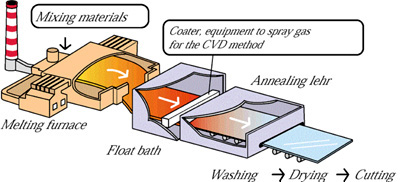 Annealed Glass Heat-Treated Glass Thermally Tempered Glass Types of Glass Construction Basically, there are 3 types of glass construction: 1. Monolithic Glass – Monolithic glass is the most basic of glass forms. It is simply a single piece of glass constructed using one glass thickness. Monolithic glass is produced using either the annealed, heat-treated or tempered glass float method.  2. Laminated Glass – Laminated glass is constructed by combining two panes of glass fused together with a middle layer of Polyvinyl Butylenes Film (PVB). PVB acts like a bonding agent to hold broken glass together. This feature creates an effective barrier against entry and reduces the chances of flying shards of glass. Automotive windshields and buildings/homes in hurricane areas (e.g. Florida) use laminated glass. 3. Insulated Glass – Insulated glass is a term used to describe two pieces of glass separated by airspace. Airspace is created using spacers or edge seals located at the top and bottom of an Insulated Glass (IG) unit. Additionally, a sealant is incorporated in the edge seals to absorb excess water vapor that travels across the seal. The airspace between the glasses minimizes heat transfer through conduction and convection, providing heavy, inert gases such as Argon and Krypton are sometimes placed in the airspace to slow down convection and reduce the amount of heat transfer. Window Film dealers should be well aware that IG units are highly susceptible to thermal stress fracture when films with high heat absorption (e.g. dyed films) are applied. insulatedglass Other types of glass construction include wired, textured and patterned glass. However, the manufacturing process associated with these types of glass usually create surface and edge flaws increasing the chance of thermal stress. Bullet resistant glass is thick and is made using multiple laminates of glass and polycarbonates. These multiple layers increase the chance of thermal stress fracture since they will heat and cool at varying temperatures. Therefore, solar control films are not recommended for bulletproof glass. Sometimes a clear film will be applied to the interior surface to hold glass shards together at impact. |
